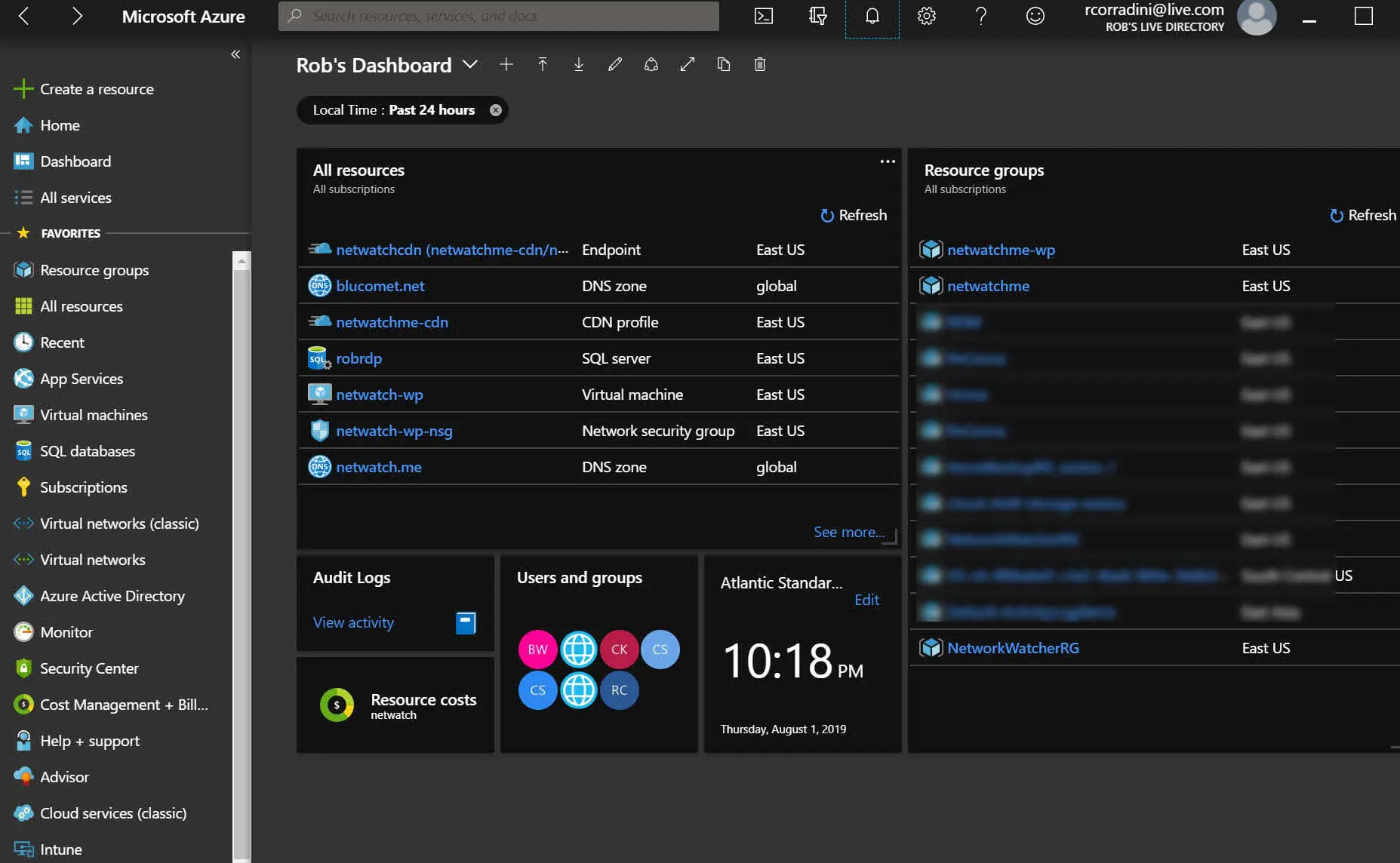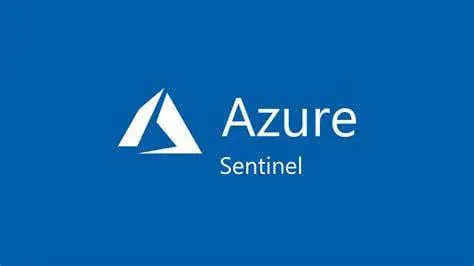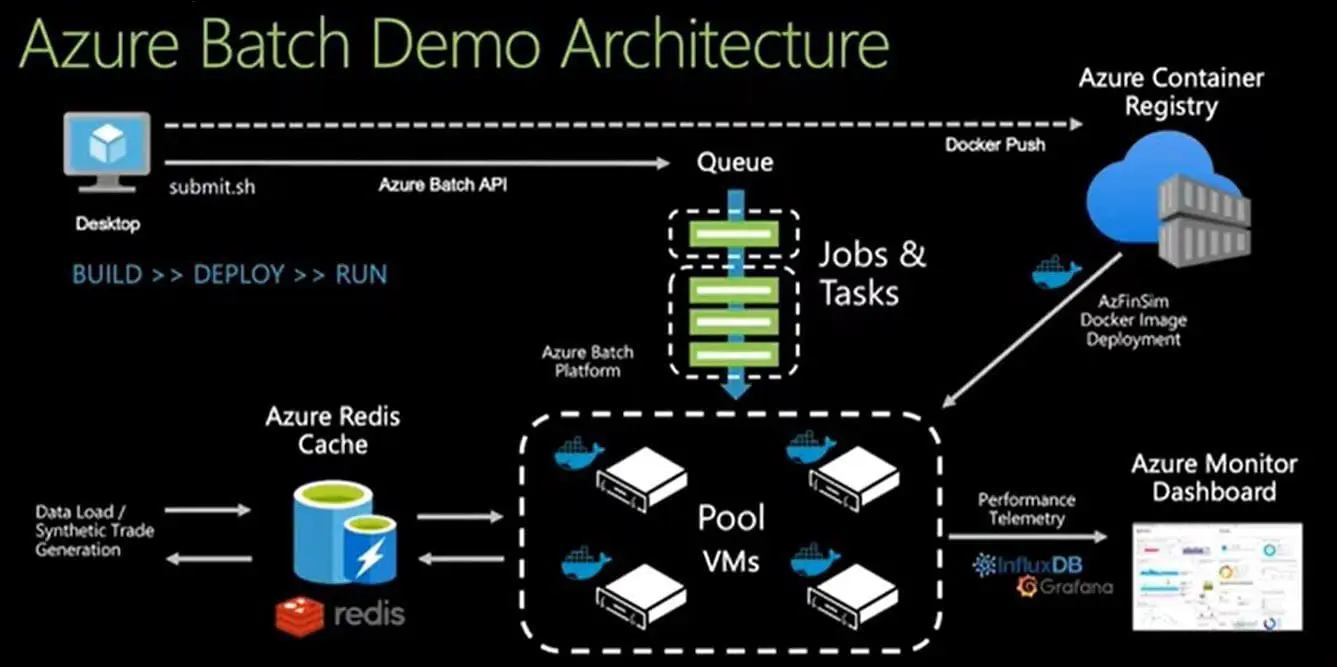
Throughout my career, my primary role has always been to make things more efficient and automated. And now more than ever, automation is needed to manage and deploy IT services at scale to support our ever-changing needs.
In my opinion, one of the most convenient aspects of public cloud-based services is the ability to host virtual machines (VMs). Hosting VMs in the cloud doesn’t just mean putting your VMs in someone else’s datacenter. It’s a way to achieve a scalable, low-cost and resilient infrastructure in a matter of minutes.
What once required hardware purchases, layers of management approval and weeks of work now can be done with no hardware and in a fraction of the time. We still probably have those management layers though 🙁
Microsoft Azure is in the lead pack along with Google (GCP) and Amazon (AWS). Azure has made great strides over the past few years on in its Infrastructure as a Service (IaaS) service which allows you to host VMs in their cloud.
Azure provides a few different ways to build and deploy VMs in Azure.
- You could choose to use the Azure portal, build VMs through Azure Resource Manager(ARM) templates and some PowerShell
- Or you could simply use a set of PowerShell cmdlets to provision a VM and all its components from scratch.
Each has its advantages and drawbacks. However, the main reason to use PowerShell is for automation tasks. If you’re working on automated VM provisioning for various purposes, PowerShell is the way to go 😉

Let’s look at how we can use PowerShell to build all of the various components that a particular VM requires in Azure to eventually come up with a fully-functioning Azure VM.
To get started, you’ll first obviously need an Azure subscription. If you don’t, you can sign up for a free trial to start playing around. Once you have a subscription, I’m also going to be assuming you’re using at least Windows 10 with PowerShell version 6. Even though the commands I’ll be showing you might work fine on older versions of PowerShell, it’s always a good idea to work alongside me with the same version, if possible.
You’ll also need to have the Azure PowerShell module installed. This module contains hundreds of various cmdlets and sub-modules. The one we’ll be focusing on is called Azure.RM. This contains all of the cmdlets we’ll need to provision a VM in Azure.
Building a VM in Azure isn’t quite as simple as New-AzureVM; far from it actually. Granted, you might already have much of the underlying infrastructure required for a VM, but how do you build it out, I’ll be going over how to build every component necessary and will be assuming you’re beginning to work from a blank Azure subscription.

At its most basic, an ARM VM requires eight individual components
- A resource group
- A virtual network (VNET)
- A storage account
- A network interface with private IP on VNET
- A public IP address (if you need to access it from the Internet)
- An operating system
- An operating system disk
- The VM itself (compute)
In order to build any components between numbers 2 and 7, they must all reside in a resource group so we’ll need to build this first. We can then use it to place all the other components in. To create a resource group, we’ll use the New-AzureRmResourceGroup cmdlet. You can see below that I’m creating a resource group called NetWatchRG and placing it in the East US datacenter.
New-AzureRmResourceGroup -Name 'NetWatchRG' -Location 'East US'
Next, I’ll build the networking that is required for our VM. This requires both creating a virtual subnet and adding that to a virtual network. I’ll first build the subnet where I’ll assign my VM an IP address dynamically in the 10.0.1.0/24 network when it gets built.
$newSubnetParams = @{
'Name' = 'NetWatchSubnet'
'AddressPrefix' = '10.0.1.0/24'
}
$subnet = New-AzureRmVirtualNetworkSubnetConfig @newSubnetParams
Next, I’ll create my virtual network and place it in the resource group I just built. You’ll notice that the subnet’s network is a slice of the virtual network (my virtual network is a /16 while my subnet is a /24). This allows me to segment out my VMs
$newVNetParams = @{
'Name' = 'NetWatchNetwork'
'ResourceGroupName' = 'MyResourceGroup'
'Location' = 'West US'
'AddressPrefix' = '10.0.0.0/16'
'Subnet' = $subnet
}
$vNet = New-AzureRmVirtualNetwork @newVNetParams
Next, we’ll need somewhere to store the VM so we’ll need to build a storage account. You can see below that I’m building a storage account called NetWatchSA.
$newStorageAcctParams = @{
'Name' = 'NetWatchSA'
'ResourceGroupName' = 'NetWatchRG'
'Type' = 'Standard_LRS'
'Location' = 'East US'
}
$storageAccount = New-AzureRmStorageAccount @newStorageAcctParams
Once the storage account is built, I’ll now focus on building the public IP address. This is not required but if you’re just testing things out now it’s probably easiest to simply access your VM over the Internet rather than having to worry about setting up a VPN.
Here I’m calling it NetWatchPublicIP and I’m ensuring that it’s dynamic since I don’t care what the public IP address is. I’m using many of the same parameters as the other objects as well.
$newPublicIpParams = @{
'Name' = 'NetWatchPublicIP'
'ResourceGroupName' = 'NetWatchRG'
'AllocationMethod' = 'Dynamic' ## Dynamic or Static
'DomainNameLabel' = 'NETWATCHVM1'
'Location' = 'East US'
}
$publicIp = New-AzureRmPublicIpAddress @newPublicIpParams
Once the public IP address is created, I then need somehow to get connected to my virtual network and ultimately the Internet. I’ll create a network interface again using the same resource group and location again. You can also see how I’m slowly building all of the objects I need as I go along. Here I’m specifying the subnet ID I created earlier and the public IP address I just created. Each step requires objects from the previous steps.
$newVNicParams = @{
'Name' = 'NetWatchNic1'
'ResourceGroupName' = 'NetWatchRG'
'Location' = 'East US'
'SubnetId' = $vNet.Subnets[0].Id
'PublicIpAddressId' = $publicIp.Id
}
$vNic = New-AzureRmNetworkInterface @newVNicParams
Once we’ve got the underlying infrastructure defined, it’s now time to build the VM.
First, you’ll need to define the performance of the VM. Here I’m choosing the lowest performance option (and the cheapest) with a Standard A3. This is great for testing but might not be enough performance for your production environment.
$newConfigParams = @{
'VMName' = 'NETWATCHVM1'
'VMSize' = 'Standard_A3'
}
$vmConfig = New-AzureRmVMConfig @newConfigParams
Next, we need to create the OS itself. Here I’m specifying that I need a Windows VM, the name it will be, the password for the local administrator account and a couple of other Azure-specific parameters. However, by default, an Azure VM agent is installed anyway but does not automatically update itself. You don’t explicitly need a VM agent but it will come in handy if you begin to need more advanced automation capabilities down the road.
$newVmOsParams = @{
'Windows' = $true
'ComputerName' = 'NETWATCHVM1'
'Credential' = (Get-Credential -Message 'Type the name and password of the local administrator account.')
'ProvisionVMAgent' = $true
'EnableAutoUpdate' = $true
}
$vm = Set-AzureRmVMOperatingSystem @newVmOsParams -VM $vmConfig
Next, we need to pick what image our OS will come from. Here I’m picking Windows Server 2016 Datacenter with the latest patches. This will pick an image from the Azure image gallery to be used for our VM.
$newSourceImageParams = @{
'PublisherName' = 'MicrosoftWindowsServer'
'Version' = 'latest'
'Skus' = '2016-Datacenter'
'VM' = $vm
}$offer = Get-AzureRmVMImageOffer -Location 'East US' -PublisherName 'MicrosoftWindowsServer'
$vm = Set-AzureRmVMSourceImage @newSourceImageParams -Offer $offer.Offer
Next, we’ll attach the NIC we’ve built earlier to the VM and specify the NIC ID on the VM that we’d like to add it as in case we need to add more NICs later.
$vm = Add-AzureRmVMNetworkInterface -VM $vm -Id $vNic.Id
At this point, Azure still doesn’t know how you’d like the disk configuration on your VM. To define where the operating system will be stored, you’ll need to create an OS disk. The OS disk is a VHD that’s stored in your storage account. Here I’m putting the VHD in a VHDs storage container (folder) in Azure. This step gets a little convoluted since we must specify the VhdUri. This is the URI to the storage account we created earlier.
$osDiskUri = $storageAcct.PrimaryEndpoints.Blob.ToString() + "vhds/" + $vmName + $osDiskName + ".vhd"
$newOsDiskParams = @{
'Name' = 'OSDisk'
'CreateOption' = 'fromImage'
'VM' = $vm
'VhdUri' = $osDiskUri
}
$vm = Set-AzureRmVMOSDisk @newOsDiskParams
Ok, Whew! We now have all the components required to finally bring up our VM. To build the actual VM, we’ll use the New-AzureRmVM cmdlet. Since we’ve already done all of the hard work ahead of time, at this point, I simply need to pass the resource group name, the location, and the VM object which contains all of the configurations we just applied to it.
$newVmParams = @{
'ResourceGroupName' = 'NetWatchRG'
'Location' = 'East US'
'VM' = $vm
}
New-AzureRmVM @newVmParams
Your VM should now be showing up under the Virtual Machines section in the Azure portal. If you’d like to check on the VM from PowerShell you can also use the Get-AzureRmVM cmdlet.
Now that you’ve got all the basic code required to build a VM in Azure, I suggest you go and build a PowerShell script from this tutorial. Once you’re able to bring this code together into a script, building your second, third or tenth VM will be a breeze!
One final tip, in addition to managing Azure Portal through a browser, there are mobile apps for IOS and Android and now the new Azure portal app (Currently in Preview). It gives you the same experience as the Azure Portal, without the need of a browser, like Microsoft Edge or Google Chrome. Great for environments that have restrictions on browsing.

Until next time, Rob…
 Divorce can be a challenging and transformative experience as it has been for me. Still, it also opens up the opportunity for growth, self-discovery, and a new chapter in life. As a 49-year-old male in Boston, diving back into the dating scene after a divorce may seem daunting. However, with the right mindset and approach, you can find the ideal partner and rekindle the romance in your life.
Divorce can be a challenging and transformative experience as it has been for me. Still, it also opens up the opportunity for growth, self-discovery, and a new chapter in life. As a 49-year-old male in Boston, diving back into the dating scene after a divorce may seem daunting. However, with the right mindset and approach, you can find the ideal partner and rekindle the romance in your life.

 In today’s rapidly evolving digital landscape, businesses and developers increasingly use cloud marketplaces to access various applications, services, and tools. The leading cloud providers—Microsoft Azure, Amazon Web Services (AWS), and Google Cloud Platform (GCP)—each offer a unique marketplace experience catering to diverse needs and preferences. This comprehensive blog post will dive deep into the world of cloud marketplaces, comparing Azure, AWS, and Google on multiple dimensions, including user experience, available services, pricing, and more. Let’s get started!
In today’s rapidly evolving digital landscape, businesses and developers increasingly use cloud marketplaces to access various applications, services, and tools. The leading cloud providers—Microsoft Azure, Amazon Web Services (AWS), and Google Cloud Platform (GCP)—each offer a unique marketplace experience catering to diverse needs and preferences. This comprehensive blog post will dive deep into the world of cloud marketplaces, comparing Azure, AWS, and Google on multiple dimensions, including user experience, available services, pricing, and more. Let’s get started!



 Microsoft Teams and Slack are two of the most popular collaboration and communication platforms used by organizations today. Both platforms offer a wide range of features, including instant messaging, file sharing, video conferencing, and more. However, some key differences between Microsoft Teams and Slack are worth considering when choosing the right platform for your organization.
Microsoft Teams and Slack are two of the most popular collaboration and communication platforms used by organizations today. Both platforms offer a wide range of features, including instant messaging, file sharing, video conferencing, and more. However, some key differences between Microsoft Teams and Slack are worth considering when choosing the right platform for your organization.
 In today’s digital world, protecting an organization’s information and assets from cyber threats has never been more critical. The rise in cyber attacks and security breaches has made it crucial for organizations to have a centralized platform to manage their security operations and respond to incidents promptly and effectively. That’s where Azure Sentinel comes in.
In today’s digital world, protecting an organization’s information and assets from cyber threats has never been more critical. The rise in cyber attacks and security breaches has made it crucial for organizations to have a centralized platform to manage their security operations and respond to incidents promptly and effectively. That’s where Azure Sentinel comes in.


 Scammers are something that I have been watching for a long time. This is affected me personally with my mother, that was scammed years ago.
Scammers are something that I have been watching for a long time. This is affected me personally with my mother, that was scammed years ago. 



